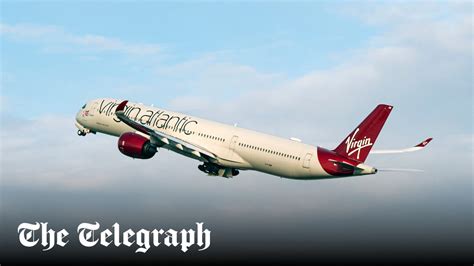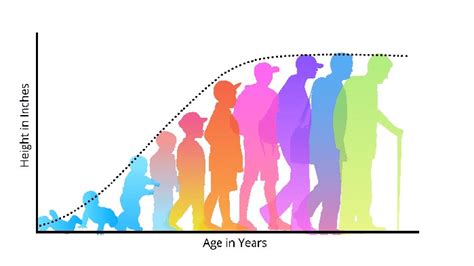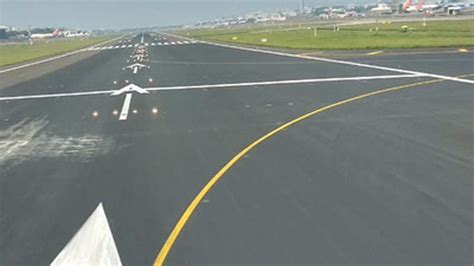
A transatlantic flight from Frankfurt, Germany, to Philadelphia abruptly returned to its origin airport mid-flight on Tuesday due to a reported maintenance issue, leaving passengers facing significant delays and raising questions about airline safety protocols. The Lufthansa flight LH426, an Airbus A330, turned around over the Atlantic Ocean approximately three hours into its journey, foregoing its planned destination.
The unscheduled return, confirmed by Lufthansa, was attributed to a technical malfunction that, while unspecified, prompted the crew to prioritize safety and adhere to standard operating procedures by returning to Frankfurt. “The flight returned to Frankfurt as a precautionary measure due to a technical defect,” a Lufthansa spokesperson stated. The incident underscores the complexities and potential disruptions inherent in air travel, particularly on long-haul routes.
Passengers on flight LH426 experienced considerable inconvenience. After the aircraft landed safely back in Frankfurt, they were deplaned and provided with accommodations as Lufthansa worked to resolve the issue and rebook them on alternative flights to Philadelphia. The airline has not yet released specific details about the nature of the maintenance problem, leaving passengers and industry analysts to speculate on the severity of the issue. This incident follows a series of recent reports of flight disruptions due to technical problems, raising concerns about the aging aircraft fleets and the increasing strain on airline maintenance departments.
Detailed Account of the Incident
Flight LH426 departed from Frankfurt Airport (FRA) on Tuesday morning, bound for Philadelphia International Airport (PHL). The Airbus A330 aircraft, a workhorse of long-haul routes, had been in the air for approximately three hours when the crew detected a problem that necessitated a return to Frankfurt. According to flight tracking data, the aircraft reached a point over the Atlantic Ocean, roughly halfway between Europe and North America, before initiating its U-turn.
The decision to turn back was reportedly made out of an abundance of caution. The Lufthansa spokesperson emphasized that the safety of passengers and crew is always the top priority. While the airline has been tight-lipped about the specifics of the “technical defect,” aviation experts suggest that the issue could have ranged from a minor equipment malfunction to a more serious problem with the aircraft’s engines, hydraulics, or flight control systems.
Upon landing back in Frankfurt, passengers were met by Lufthansa ground staff who assisted with rebooking and accommodation arrangements. The airline provided hotel rooms for those who needed to stay overnight, and worked to get passengers on the next available flights to Philadelphia. The disruption caused significant delays for many travelers, some of whom missed connecting flights or important appointments.
Passenger Experiences and Reactions
Passengers aboard flight LH426 expressed a range of emotions, from frustration and disappointment to relief that the situation was handled safely. Some took to social media to share their experiences, posting updates and images of the aircraft’s return to Frankfurt. While there were undoubtedly concerns about the cause of the malfunction, most passengers seemed appreciative of the crew’s professionalism and the airline’s efforts to minimize the disruption.
“It was definitely unsettling to hear that we had to turn around in the middle of the Atlantic,” said one passenger who wished to remain anonymous. “But the crew kept us informed throughout the process, and they seemed to be very calm and collected. I felt like we were in good hands.”
Another passenger expressed frustration with the lack of information about the nature of the technical problem. “I understand that they may not want to cause unnecessary alarm, but it would be helpful to know what exactly went wrong,” she said. “It’s hard not to worry when you’re flying thousands of miles over the ocean and something like this happens.”
Airline Safety Protocols and Maintenance Procedures
The incident involving flight LH426 highlights the importance of rigorous airline safety protocols and maintenance procedures. Airlines are required to adhere to strict regulations set by aviation authorities, such as the Federal Aviation Administration (FAA) in the United States and the European Aviation Safety Agency (EASA) in Europe. These regulations cover everything from aircraft design and manufacturing to maintenance, operations, and pilot training.
Regular maintenance checks are a critical part of ensuring the safety of aircraft. Airlines typically follow a schedule of routine inspections and repairs, which are designed to identify and address potential problems before they become serious. These checks can range from simple visual inspections to more complex procedures that involve dismantling and inspecting critical components.
In the event of a technical malfunction, pilots are trained to follow established procedures to assess the situation and take appropriate action. This may involve consulting with maintenance personnel on the ground, adjusting flight parameters, or, as in the case of flight LH426, returning to the origin airport. The decision to turn back is typically made in consultation with the airline’s operations center, which provides support and guidance to the flight crew.
Impact on Lufthansa and the Aviation Industry
The incident involving flight LH426 is likely to have a number of impacts on Lufthansa and the broader aviation industry. First, it will likely result in financial losses for the airline, due to the cost of rebooking passengers, providing accommodations, and repairing the aircraft. Second, it could damage Lufthansa’s reputation, particularly if the cause of the malfunction is determined to be a result of negligence or inadequate maintenance. Third, it could lead to increased scrutiny of Lufthansa’s safety procedures by aviation authorities.
More broadly, the incident highlights the challenges facing the aviation industry as it grapples with aging aircraft fleets and increasing demand for air travel. Many airlines are operating older aircraft, which require more frequent maintenance and are more prone to technical problems. At the same time, airlines are under pressure to keep costs down and maintain profitability, which can sometimes lead to compromises on maintenance and safety.
The incident also underscores the importance of investing in new aircraft and technologies. Newer aircraft are typically more reliable and fuel-efficient, and they incorporate advanced safety features that can help to prevent accidents. By investing in new aircraft, airlines can reduce the risk of technical malfunctions and improve the overall safety of air travel.
Comparison to Similar Incidents
While the mid-air U-turn of Lufthansa flight LH426 is noteworthy, it is not an isolated incident. Over the years, there have been numerous cases of flights being diverted or returning to their origin airport due to technical problems. These incidents serve as reminders of the inherent risks of air travel and the importance of maintaining high safety standards.
In one recent example, a United Airlines flight from San Francisco to Paris was forced to divert to Denver after experiencing a mechanical issue shortly after takeoff. In another case, an American Airlines flight from Dallas to London turned back to Dallas due to a problem with one of the engines. These incidents, like the Lufthansa flight, resulted in significant delays and inconvenience for passengers.
A review of past incidents reveals that technical malfunctions can occur on aircraft of all types and ages. However, older aircraft are generally more prone to problems due to wear and tear and the increased likelihood of component failures. This underscores the importance of airlines investing in new aircraft and maintaining their existing fleets to the highest possible standards.
The Role of Technology in Aviation Safety
Technology plays a crucial role in ensuring the safety of air travel. Modern aircraft are equipped with sophisticated systems that monitor performance, detect potential problems, and assist pilots in maintaining control. These systems include:
- Flight Management Systems (FMS): These systems provide pilots with real-time information about the aircraft’s position, altitude, speed, and fuel consumption. They also help to plan and execute flight routes, and can automatically adjust flight parameters to optimize performance and safety.
- Engine Monitoring Systems: These systems continuously monitor the performance of the aircraft’s engines, detecting any anomalies or potential problems. They can provide pilots with early warnings of engine malfunctions, allowing them to take corrective action before the situation becomes critical.
- Automatic Flight Control Systems (AFCS): These systems, also known as autopilots, can automatically control the aircraft’s flight path, altitude, and speed. They can reduce pilot workload and improve the accuracy and efficiency of flight operations.
- Enhanced Ground Proximity Warning Systems (EGPWS): These systems provide pilots with warnings of potential terrain hazards, such as mountains or buildings. They can help to prevent controlled flight into terrain (CFIT) accidents, which are a leading cause of aviation fatalities.
In addition to these onboard systems, technology also plays a vital role in air traffic control, weather forecasting, and aircraft maintenance. Air traffic controllers use radar and other technologies to monitor the position of aircraft and provide guidance to pilots. Weather forecasters use sophisticated models to predict weather patterns and provide pilots with accurate weather information. Maintenance technicians use advanced diagnostic tools to identify and repair potential problems with aircraft.
Future Trends in Aviation Safety
The aviation industry is constantly evolving, with new technologies and procedures being developed to improve safety and efficiency. Some of the key trends in aviation safety include:
- Increased Automation: Automation is playing an increasingly important role in all aspects of aviation, from flight control to air traffic management. While automation can improve efficiency and reduce pilot workload, it also raises concerns about the potential for human error and the need for pilots to maintain their skills in manual flight operations.
- Data Analytics: Airlines are increasingly using data analytics to identify potential safety risks and improve maintenance procedures. By analyzing data from flight recorders, maintenance logs, and other sources, airlines can identify patterns and trends that might indicate potential problems.
- Artificial Intelligence (AI): AI is being used to develop new tools and technologies for aviation safety, such as predictive maintenance systems and automated flight control systems. AI can also be used to improve pilot training and enhance air traffic management.
- Sustainable Aviation Fuels (SAF): The aviation industry is committed to reducing its environmental impact, and the development of sustainable aviation fuels is a key part of this effort. SAFs can reduce carbon emissions and improve air quality, helping to make air travel more sustainable.
Conclusion
The mid-air U-turn of Lufthansa flight LH426 serves as a reminder of the complexities and potential disruptions inherent in air travel. While the incident caused significant inconvenience for passengers, it also highlights the importance of rigorous airline safety protocols and maintenance procedures. By adhering to these protocols and investing in new technologies, airlines can continue to improve the safety and reliability of air travel. The airline industry must focus on transparency, thorough maintenance, and continuous improvements in safety measures to maintain passenger confidence and ensure the reliability of air travel. In addition, clear communication protocols are essential in managing passenger expectations and minimizing anxiety during such incidents. The incident also calls for a proactive approach towards upgrading aging fleets and integrating advanced technologies to enhance safety and operational efficiency. Ultimately, a collaborative effort among airlines, regulatory bodies, and technology developers is crucial to fostering a safer and more resilient air travel ecosystem.
Frequently Asked Questions (FAQ)
1. What caused the Lufthansa flight LH426 to turn back to Frankfurt?
The flight returned to Frankfurt due to a reported “technical defect,” according to Lufthansa. The specific nature of the defect has not been publicly disclosed, but the airline emphasized that the decision to turn back was a precautionary measure taken to ensure the safety of passengers and crew.
2. Were passengers on board the flight at risk?
Lufthansa has stated that the flight returned as a “precautionary measure.” While the nature of the technical defect is unknown, the decision to turn back indicates that the crew and airline deemed it necessary to prioritize safety. There have been no reports of injuries or any immediate danger to passengers.
3. What happened to the passengers after the flight returned to Frankfurt?
After landing in Frankfurt, passengers were deplaned and provided with accommodations and rebooking assistance by Lufthansa. The airline worked to get passengers on the next available flights to Philadelphia.
4. How often do flights have to turn back mid-air due to technical issues?
While not a daily occurrence, flights turning back mid-air due to technical issues are not uncommon. Such incidents highlight the importance of stringent safety protocols and maintenance procedures in the aviation industry. The frequency varies depending on factors like aircraft age, maintenance schedules, and the specific airline’s operational practices.
5. What measures are in place to prevent similar incidents from happening in the future?
Airlines adhere to strict regulations set by aviation authorities such as the FAA and EASA, which cover aircraft design, manufacturing, maintenance, and operations. Regular maintenance checks, pilot training, and the use of advanced technology like flight management systems and engine monitoring systems are all crucial components of preventing technical malfunctions and ensuring flight safety. Furthermore, ongoing investment in newer, more reliable aircraft and continuous improvement of safety protocols contribute to minimizing the risk of such incidents.









